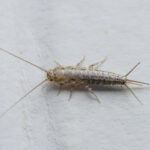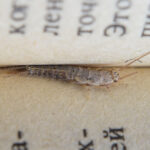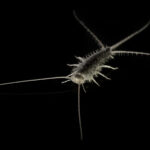How Can We Help?
What draws silverfish into a home?
Silverfish are drawn into homes by several environmental factors and the availability of food sources. These nocturnal insects thrive in dark, damp environments, so they are often found in areas with high humidity, such as bathrooms, basements, laundry rooms, and kitchens. Leaky pipes, poor ventilation, and standing water provide the moisture silverfish need for survival and reproduction. They are also attracted to homes where there are plenty of hiding spots, such as cracks, crevices, and cluttered storage areas.
Food sources are another significant draw for silverfish. They feed on starchy materials and carbohydrates, including
Silverfish are adept at finding their way indoors through tiny openings, gaps around windows and doors, and cracks in the foundation. Once inside, they can remain hidden and reproduce, leading to larger infestations over time. Effective control involves reducing humidity, sealing entry points, and eliminating potential food sources, making the home less hospitable to these pests.
What environmental conditions attract silverfish?
Silverfish are attracted to specific environmental conditions that provide the moisture, temperature, and food sources necessary for their survival. High humidity is a primary factor; these insects thrive in damp environments, typically preferring relative humidity levels above 75%.
Temperature also plays a critical role in attracting silverfish. They prefer moderate to warm temperatures, ideally between 70 to 80 degrees Fahrenheit. This preference makes indoor environments particularly appealing, especially in climates where these conditions are consistently met throughout the year.

Maintaining lower humidity levels, ensuring proper ventilation, sealing entry points, and reducing clutter and food sources can help make the environment less attractive to silverfish, thereby preventing infestations.
Do seasonal changes impact when silverfish are most likely to invade homes?
Seasonal changes can significantly impact when silverfish are most likely to invade homes, with these pests typically seeking shelter indoors during periods of extreme weather. During the warmer months, silverfish may be drawn indoors by the cool, damp conditions found, as these environments provide the moisture they require for survival. High outdoor temperatures can drive them inside in search of a more hospitable climate. Conversely, in colder months, silverfish may seek the relative warmth of indoor environments to escape the harsh outdoor conditions.
The transition between seasons, particularly from summer to autumn and winter to spring, often sees increased indoor activity as silverfish search for stable conditions to sustain their moisture and temperature needs. Additionally, seasonal changes can affect the humidity levels in homes, with periods of increased rainfall or indoor heating leading to higher humidity levels that attract silverfish.
These pests are also more likely to enter homes during times when structural gaps and cracks may form or become more accessible, such as during winter when materials contract or in spring when expansion occurs. To prevent seasonal invasions, homeowners should focus on maintaining consistent indoor humidity levels, sealing entry points, and reducing potential food sources throughout the year.
Can the presence of houseplants or potting soil attract silverfish?
The presence of houseplants or potting soil can indeed attract silverfish, primarily due to the moist and humid conditions these environments create. Houseplants often require regular watering, which increases the humidity around them. The damp soil in potted plants provides an ideal habitat for silverfish, offering both moisture and shelter.
Additionally, potting soil and organic matter associated with houseplants can serve as a food source for silverfish.
To mitigate the attraction of silverfish to houseplants, it is important to manage the moisture levels around the plants carefully. Avoid overwatering and ensure proper drainage to avoid excess moisture buildup. Regularly clean the area around houseplants to reduce dust and debris, and consider using potting soil that discourages the growth of fungi and algae. By maintaining a balanced environment for houseplants, homeowners can reduce the likelihood of attracting silverfish. Here at Youngs Pest Control, our experts are ready to help you eliminate any silverfish infestation and provide tips for preventing future invasions.
